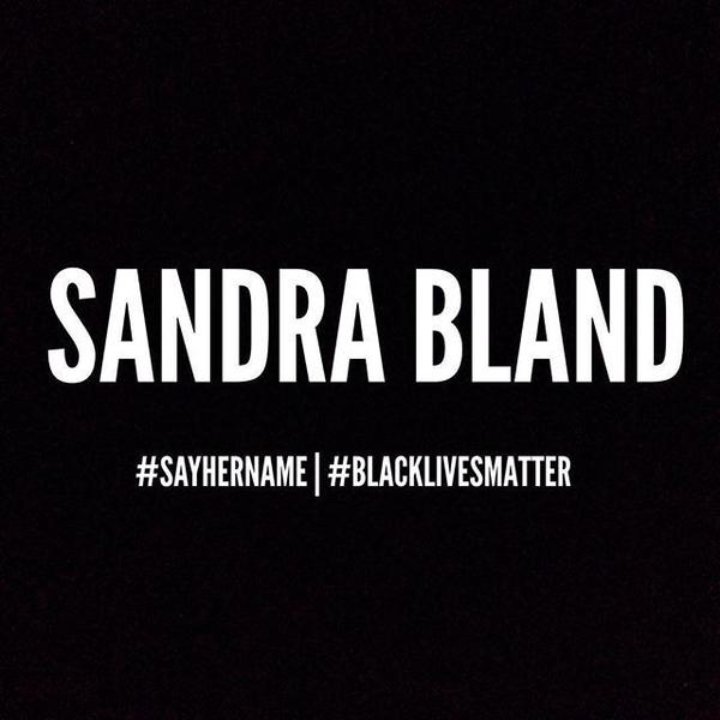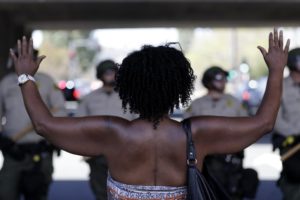How is the escalating violence direct at women a racial violence, that is, violence directed at women because they are Black? What analytics are available to us from Black women’s resistance?
View the following case on RDIC:

“Spurred by the efforts of Kimberlé Crenshaw and Andrea J. Ritchie, the #SayHerName movement was born to shed light on “Black women’s experiences of police violence in an effort to support a gender-inclusive approach to racial justice that center all Black lives equally.” The #SayHerName movement is a response to the Black Lives Matter movement and the mainstream media’s tendency to sideline the experiences of Black women in the context of police brutality and anti-Black violence. An intersectional approach to police brutality and killings, as well as anti-Black racial terror, renders visible the experiences of Black women and girls, trans, genderqueer, non-binary, and queer people.” From RaceandDeathsinCustody
Understanding this contemporary era of anti-Black racial terror and subjugation requires excavating the gender-specific and gendered dynamics of anti-Black racial violence and necessitates a more inclusive conceptualization of the Black violable subject. A herstorical approach to Black violability does not preclude studying and acknowledging the particular historical and lived experiences of Black men and boys with anti-Black racial violence in United States. Rather it offers an expansive lens that renders visible Black women and girls and trans*, genderqueer, gender nonconforming, and queer people as victims and survivors of anti-Black racial terror.”
Treva B. Lindsey
Reading:
- African American Policy Forum, Say Her Name: Resisting Police Brutality Against Black Women. July 2015 Update.
- Kimberle Crenshaw, “From Private Violence to Mass Incarceration: Thinking Intersectionally About Women, Race, and Social Control.” UCLA Law Review 59 (2012): 1418-1438.
- Tiffany Willoughby-Herard, “(Political) Anesthesia or (Political) Memory: The Combahee River Collective and the Death of Black Women in Custody.” Theory & Event 21. 1 (2018): 259-28.
- Treva B. Lindsey, “Post-Ferguson: A “Herstorical” Approach to Black Violability.” Feminist Studies 41.1 (2015): 232-237
For additional reading, see:
- J. Brendan Shaw, “Sandy still speaks: the digital afterlives of Sandra Bland.” Prose Studies (2018).
- Say Her Name: A Webinar on Black Women and Police Violence by the African American Policy Forum. 2015.
- Invisible Betrayal: Police Violence and the Rapes of Black Women in the United States by the Black Women’s Blueprint. 2014.
- Beth Richie, Arrested Justice: Black Women, Violence, and America’s Prison Nation. New York: New York University Press, 2012.
- Law Enforcement Violence against Women of Color & Trans People of Color: An Organizer’s Resource & Tool Kit. By Incite! Women of Color Against Violence.
Note: Featured Photo from The Takeaway on WNYC on Invisible No More: Police Violence Against Women of Color, photo by Gregory Bull

